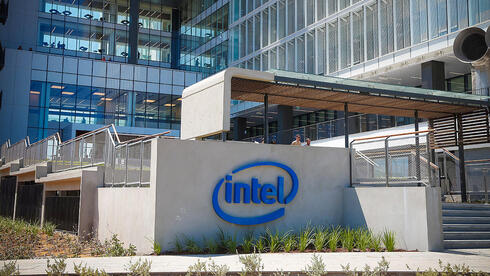
Mobileye defies expectations with revenue growth despite $2.6 billion write-off
Mobileye defies expectations with revenue growth despite $2.6 billion write-off
With an unexpected revenue boost, Mobileye aims to regain investor confidence despite a $2.6B hit.
A substantial $2.6 billion write-off due to declining stock market value following Intel's acquisition impacted Mobileye’s financial report for the third quarter. However, this didn’t prevent its stock from soaring after the report’s release. During trading, Mobileye's valuation rose slightly above $10 billion—still significantly lower than the $15 billion value at which it was sold to Intel in 2016 and below its reissue valuation two years ago. After a prolonged period of declines and analyst downgrades, investors today chose to focus on operational signals of stabilization.
For the first time since late 2023, there were no major negative surprises in the reports, especially in the forecasts, which contributed to investor optimism. "While our short-term business environment remains challenging, we are focused on medium- and long-term opportunities, which we anticipate will become more evident in the coming months," summarized Amnon Shashua, founder and CEO of Mobileye. Although the company hasn’t provided forecasts for next year, Shashua conveyed cautious optimism: "We expect growth in 2025, partly due to the stabilization of the inventory issue. Next year’s cash flow should be stronger, and we have $1.3 billion in cash reserves for acquisitions and growth. We have everything we need to support our growth."
While Mobileye does show some stabilization, it still reported a $2.7 billion loss under full accounting rules. Excluding the write-off, its operating profit was reduced by 60% to $78 million, similar to the net profit. On the revenue side, the decline eased somewhat, with Mobileye closing the third quarter with $486 million in revenue, down 8% year-on-year—though slightly exceeding forecasts and boosting investor confidence. However, profitability continued to erode, as gross profit margins declined to 49%, reducing operating profitability to 16% of revenue, compared to 34% in the previous period. This drop was driven by both a decrease in sales volume for driver assistance systems (ADAS) and a slight decline in average selling price.
One positive development is that Mobileye has not cut its forecasts for the first time since the late 2023 crisis. Investors are currently focusing on the company’s stabilization and forecast retention, driving a rise in pre-market trading. Mobileye expects revenue of approximately $1.6 billion in 2024, with an operating loss of $3.2 billion, primarily due to the write-off. Excluding this, it anticipates an operating profit of $160-190 million.
Throughout the year, Mobileye has implemented various efficiency measures, including the recent closure of its lidar division, which developed advanced motion sensors for autonomous vehicles. Once considered a promising field, lidar technology has seen prices drop significantly, and advancements in AI raise questions about its necessity. Mobileye now focuses on imaging radar as a key component for autonomous vehicle development. The lidar division's closure, which affected 60 employees, follows the discontinuation of the company’s original business line—driver warning systems for lane deviation and collision avoidance—resulting in an additional 130 layoffs, 90 of them in Israel. Following these cuts, Mobileye’s workforce has decreased to 3,500 employees.
However, Mobileye’s biggest challenge remains the Chinese market. The country's massive automotive market and growing exports were foundational to the company’s growth strategy. Yet a dual pressure—China's economic slowdown, affecting local market growth, and the European Union’s increased tariffs on Chinese EVs—has complicated this plan.
Adding to the challenge, Shashua noted a strategic shift toward internal development in China, with domestic firms preferring to build in-house rather than rely on external providers. Additionally, competition from tech giants such as Nvidia and Qualcomm intensifies the market landscape. Although Mobileye's rapid growth has stemmed from numerous partnerships with leading Chinese brands like Zeekr and Polestar, growth has recently stalled.
In the first half of 2023, a 100% increase in the deployment of ADAS systems developed by Mobileye was recorded in China, with revenue from Chinese sales reaching $269 million. However, this figure fell to $199 million in the second half. Recently, in September, the Chinese car market saw its first increase in five months, aided by government subsidies.
Shashua addressed Zeekr's decision to develop its own ADAS based on Nvidia’s chips: "Their internal system costs twice as much as ours but offers the same performance. It’s a strategic decision in China, driven by policy directives to develop domestically, even if it’s more expensive. Nevertheless, our system remains installed in 300,000 existing Zeekr vehicles."
As a result, Mobileye now concentrates mainly on European carmakers, according to Shashua: "We continue to focus on our main strategic goals for the next two years, which include strengthening our ADAS position outside China and deepening our relationships with our top ten customers." Mobileye’s reliance on its major clients is high, with its ten largest customers, mostly from China, contributing to 80% of the company's revenue.















